Glass mouse pad do it yourself
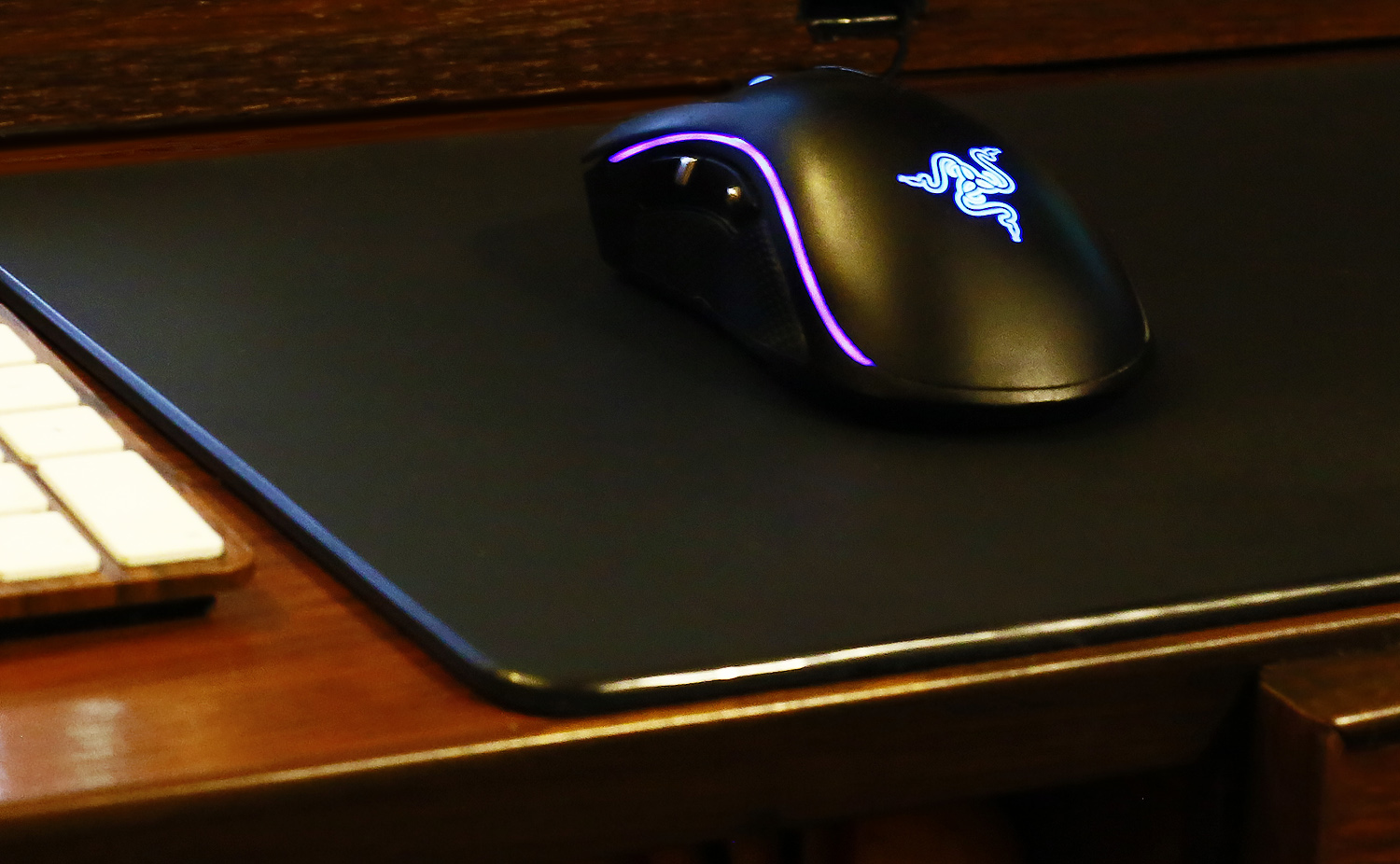
The glass mouse pad has the following advantages:
- constancy of sliding properties no erasing of the surface texture;
- lack of sticking (to move the mouse from its place, an effort greater than when sliding is required);
- easy to clean (just wipe with a damp cloth and then wipe dry);
- gliding is very easy, but there is enough control.
There are disadvantages:
- fogging of the surface if contact with a fixed hand occurs for some time;
- requires monitoring of the cleanliness of the surface - when solid dust gets in, it sometimes gets stuck in the legs of the mouse and the slip deteriorates.
To make glass a mouse pad, i.e. in order for the sensor to read the image of the surface, it is necessary to make this surface matte. Glass matting can be done in three main ways - chemical, sandblasting and mechanical using abrasives.
Chemically matted glass can be ordered from the glass workshop, they will immediately make the right size, with a finished edge, but to be used as a mouse pad, you will have to additionally treat the surface, paint the back side and glue either the legs, or glue the anti-friction pad on the entire reverse surface.
At home, the easiest and most importantly safer, the third way - mechanical.
The only unpleasant moment - processing the edges of the glass. This is done with diamond files or discs, necessarily using wetting, because glass dust is quite harmful.
For matting used abrasive paste. I used the paste to grind the engine cylinders.
As a result of matting with an abrasive paste, the surface acquires the character of rocky mountains, if you imagine the view, in the section and under magnification, it will look like the following picture:

Esstno such a surface texture is an excellent abrasive "float". Sliding the mouse over such a surface is characterized by strong friction, loud noise and ruthless erasing of the legs - in fact, it is a fine-grained skin.
In order to make the slide easy, quiet and not erasing the legs of the mouse, you need to grind off the tops, making them flat, and then polish.

Sewing the tops of the bar is made with sandpaper, grit ranging from 1000 and ending with 3000-5000. At the final stage it is polished with GOI paste, you can also polish with buffs for nail polishing, but this is very dreary.
In total, at the moment, I made about 10 glass mats. Each time, any new ideas or types of glass were used. After making a new one, the previous ones were usually given or sold. Before making this rug, a rug made of chemically-matted glass was used. Very good mat, featuring a very smooth and pleasant slip.
A couple of months ago, I bought a fluoroplastic film for baking , in order to make a rug out of it. The film stuck on the glass and used as a mouse pad for about 2 weeks. The slip was excellent and I was already beginning to rejoice that a good alternative to glass mats was found, but unfortunately a thin layer of fluoroplastic began to wipe, exposing the fiberglass, the slip became dry, hissing, unpleasant ...
He removed the film, but decided to make another rug out of glass. The glass is somewhat unusual - thickness is 5mm, one side is tinted with a translucent mirror layer. Glass looked though transparent, but dark gray. Not the mirror side was matted, but transparent.
In the manufacture of previous mats, I always used a fine-grained paste for grinding cylinders. This time, the main idea and interest was in using a coarse paste - medium granular.
The idea is to create a deeper relief on the surface and see if it will turn out to make the glide smooth.
Such paste was used:
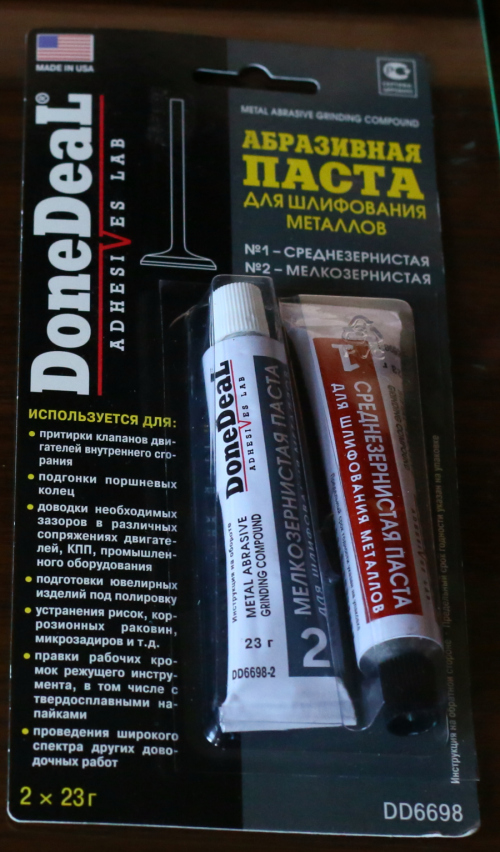
Matting was performed by grinding the paste with a piece of glass, half the size of a palm. So that the hand does not slip, leather or suede or even double-sided tape is stuck on the top of the shirt.
Accordingly, the paste is applied to the glass and then polished in a circular motion. Physically quite a hard task, because the paste is thick, and the process is not fast. From time to time I would dig up white spirit to make it easier to move the glass bar. After passing over the entire surface, the spent paste is washed off with warm water and soap, the surface is dried with a clean rag and an assessment of the matting results is done.
In general, in order to evenly mate it is necessary to try - after the first passage, the center is mainly matted, and the edges and especially the corners remain almost unmatted. To assess the uniformity can only wash the paste.
The process is repeated until the entire surface is evenly mated. It takes about 4-5 approaches.
After matting, it is necessary to cut off the tops of sharp teeth, for this purpose a bar is used with as even and smooth surface as possible on which the skin is applied. On the reverse side of the bar, near the ends, a couple of strips of double-sided tape are glued so that the skin is wrapped around the bar.
At first, I used the skin with a grain of 1000 and gradually reached 3000. After that, it is necessary to polish the flat tips of the teeth, this will ensure smooth sliding, and also greatly improves the sensor's performance.
I did polishing with the help of a felt wheel and nozzles for a drill with GOI paste. GOI paste crumbles on the glass, drips engine oil and then is polished with a felt circle. This has to be done in the bathroom because green splashes are flying in all directions. The blessing then with a sponge with soap is washed off easily.
When compared with a mat, matted with fine-grained paste, it took quite a long time to polish. He made several “approaches”, after each GOI paste was washed off, the mat dried, the mouse glide and the surface reading quality were checked (the w-mouse allows to evaluate the surface quality and also see the picture from the sensor).
When, after another check, the slip did not improve, I already thought that the idea of using large grain was flawed. But after the next polishing, finally there was a noticeable improvement in slip.
After a few more polishes, the glide was excellent. Soft, light, quiet ... almost levitation ... but at the same time excellent control was maintained.
Usually, I painted the back side in black and then glued thin foam rubber or suede. But this glass, on the reverse side, had a mirror layer, giving a beautiful grayish tonality, so I decided to use a rug with small round legs made of silicone.
Here's what happened:
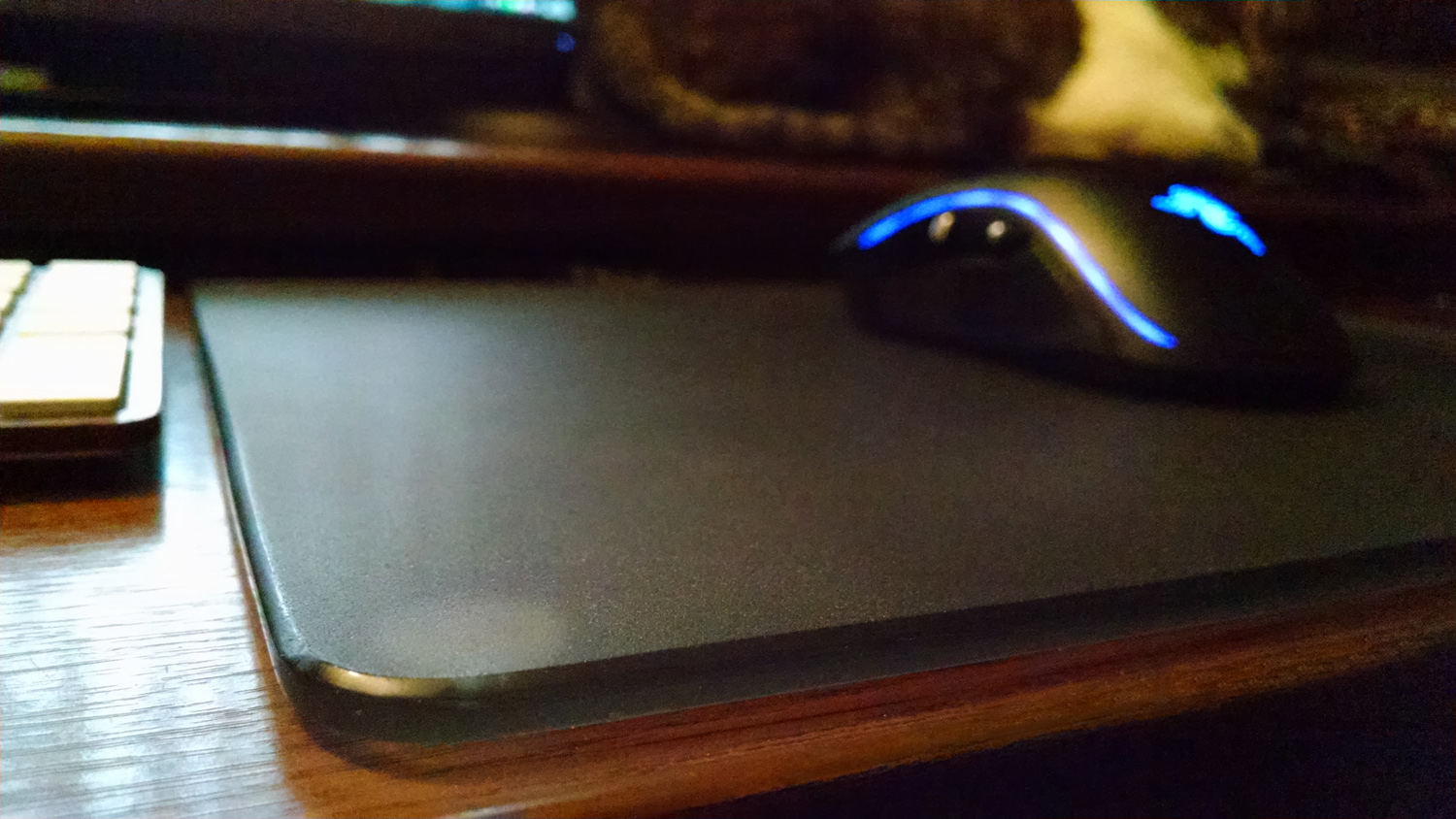


Due to the lower mirror layer, the transparency of the rug depends on the angle of incidence of light:

On the reverse side, the specularity is much stronger:
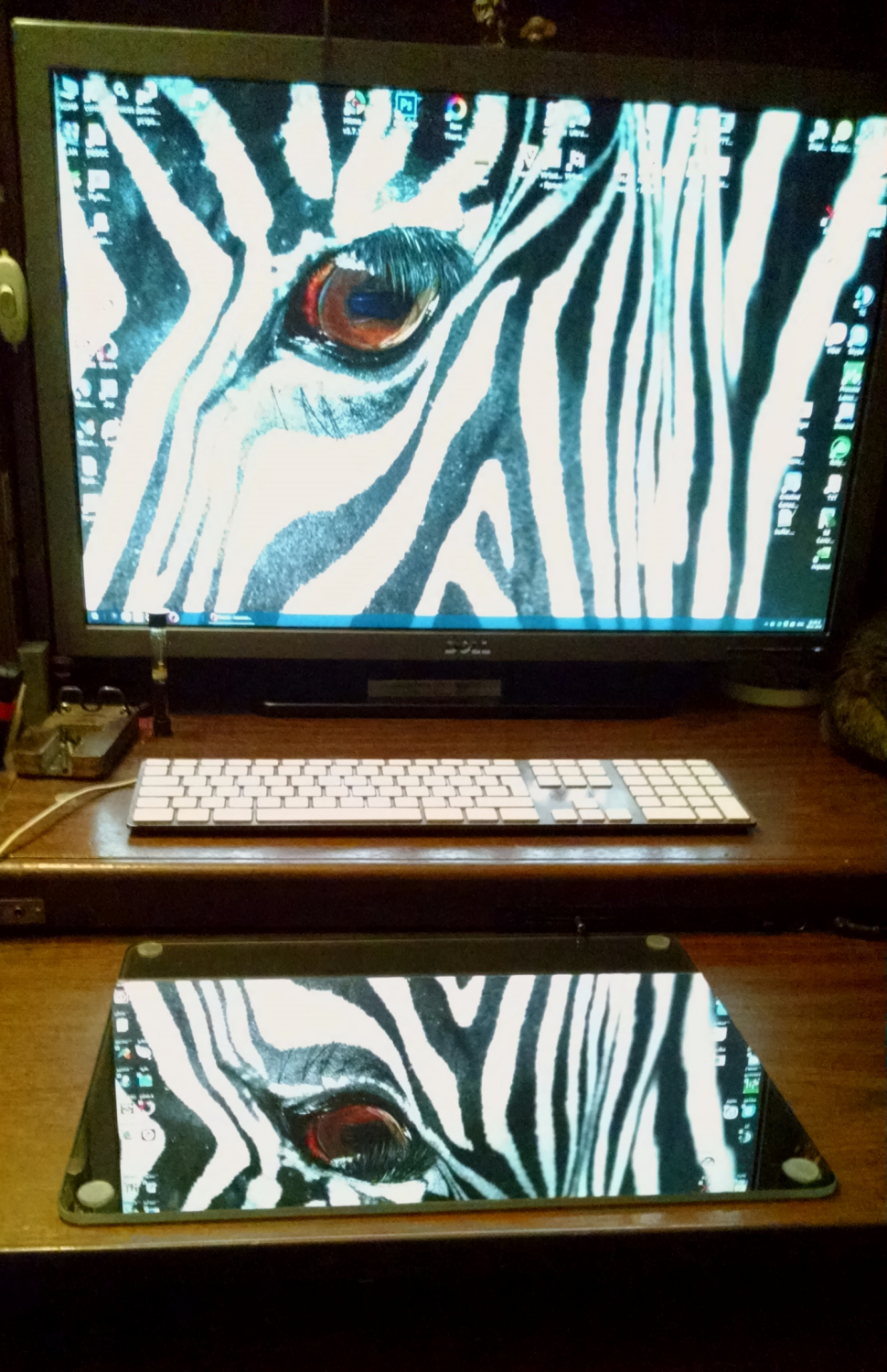
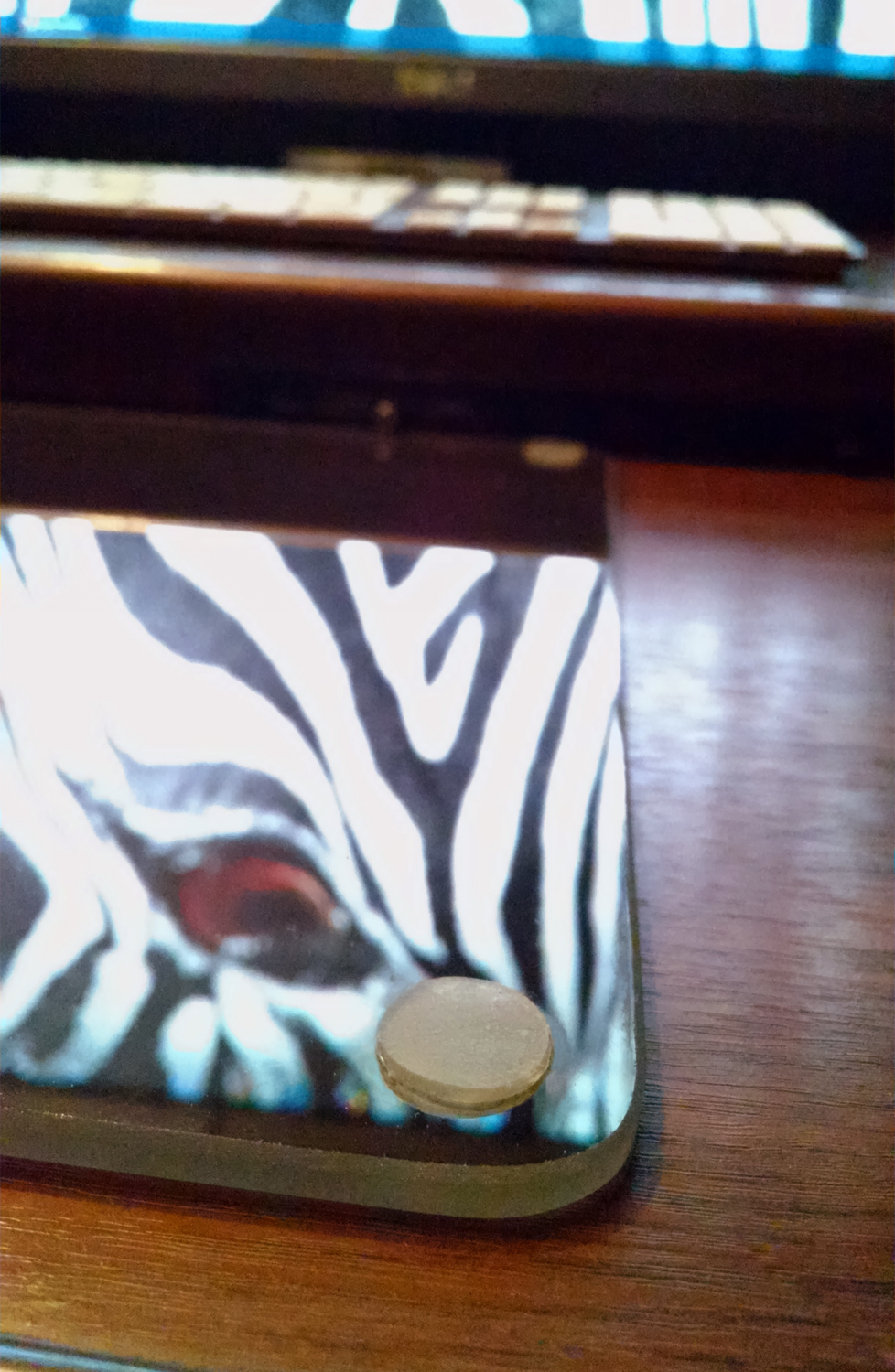
Unfortunately, the picture read by the sensor turned out to be dependent not only on the upper surface, but also on the lower one. In order for the sensor to work qualitatively, the illumination uniformity should be as uniform as possible, but due to the specularity of the lower surface, the lower part of the working field was brighter. The picture is clearly seen:
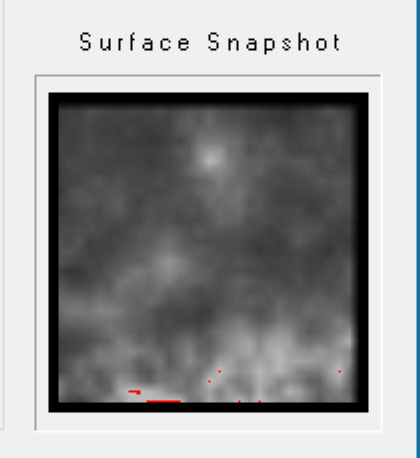
Of course, the influence is not strong, maybe even a miserable one, but perfectionism sharpened the soul with dissatisfaction. :) As a result, after a couple of weeks of use, I decided to remove the mirror layer, paint the bottom surface black and stick a thin silicone film on the entire surface.
No solvents took a mirror layer, so I had to tear it off mechanically, i.e. I had to mate and the reverse side.
For painting, used a conventional can of black paint from the auto parts store.
What would the mat did not slide stuck silicone film - it was bought in the store fix prices, it costs about 100 rubles.
When silicone is applied, there is one nuance - it is glued only to silicone sealant, all other adhesives and double-sided tape are useless. The process of gluing is quite simple - silicone sealant, using a plastic card is smeared on the surface of the glass, then silicone film is applied and the thread is leveled with a roller and again, with a plastic card, the main thing is to do everything quickly.

As a result, the illumination of the surface under the sensor became quite uniform:

Here's what happened in the end:
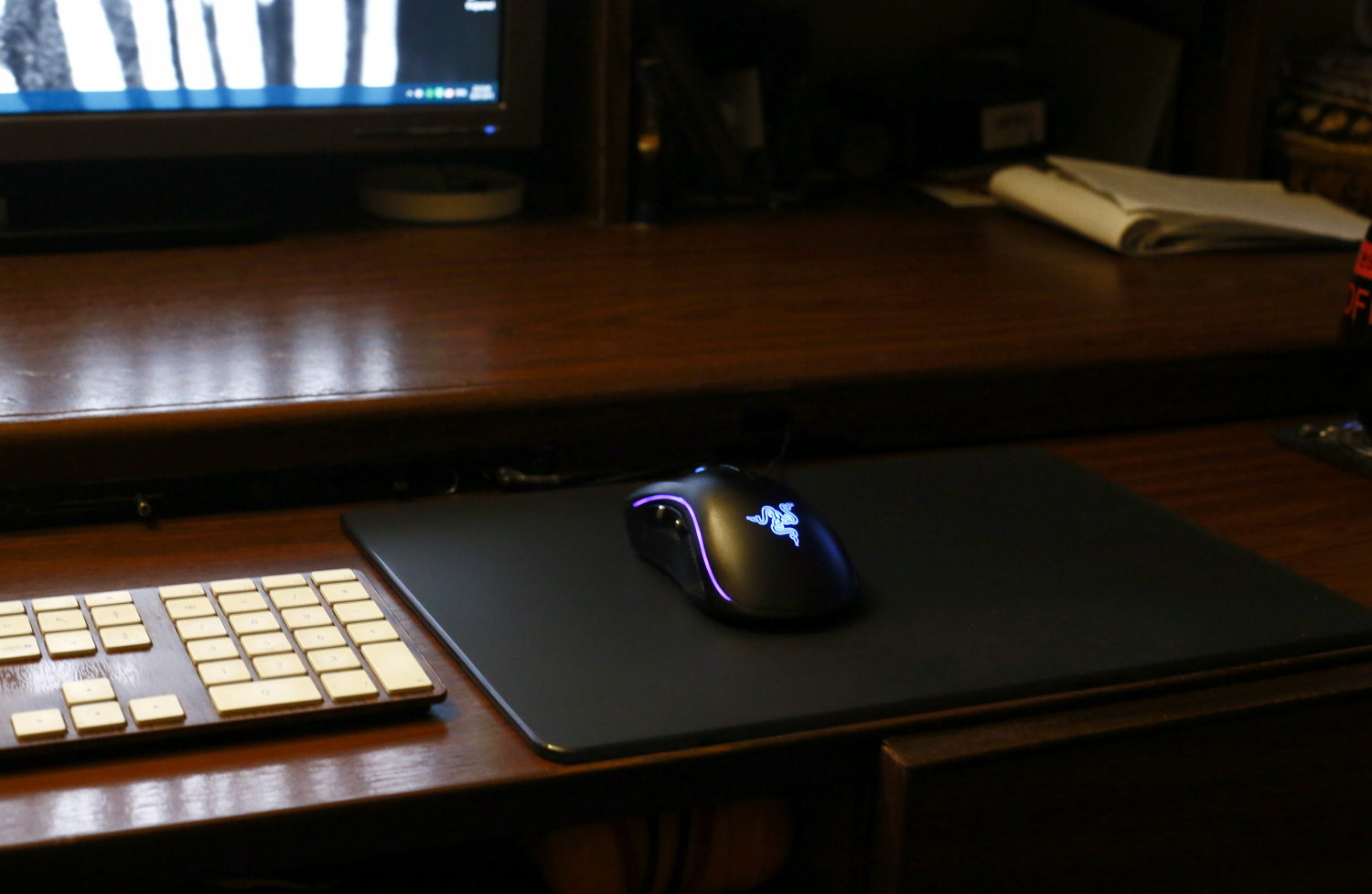

In conclusion, I would say that the idea of making a matting with a coarse paste justified itself - it turned out to be one of the best mats that I did, that is, I am very pleased with the result :)
If you have questions, ask.
All Articles